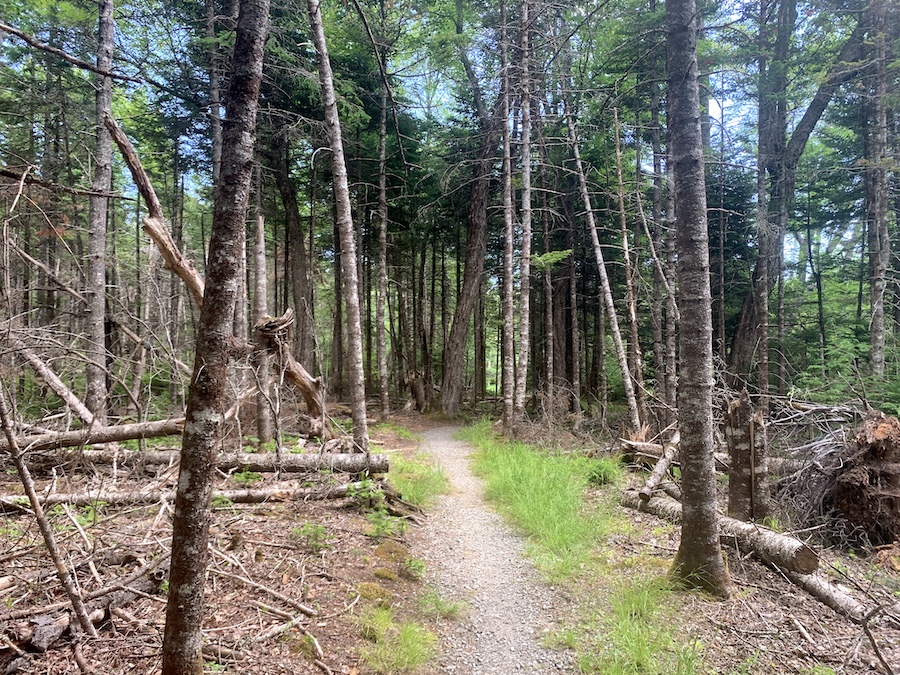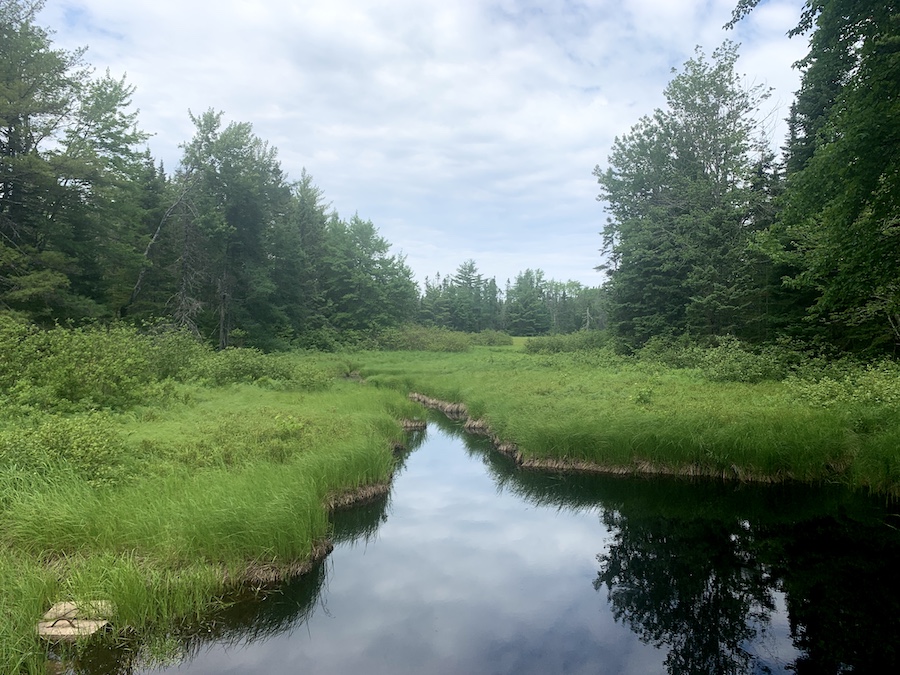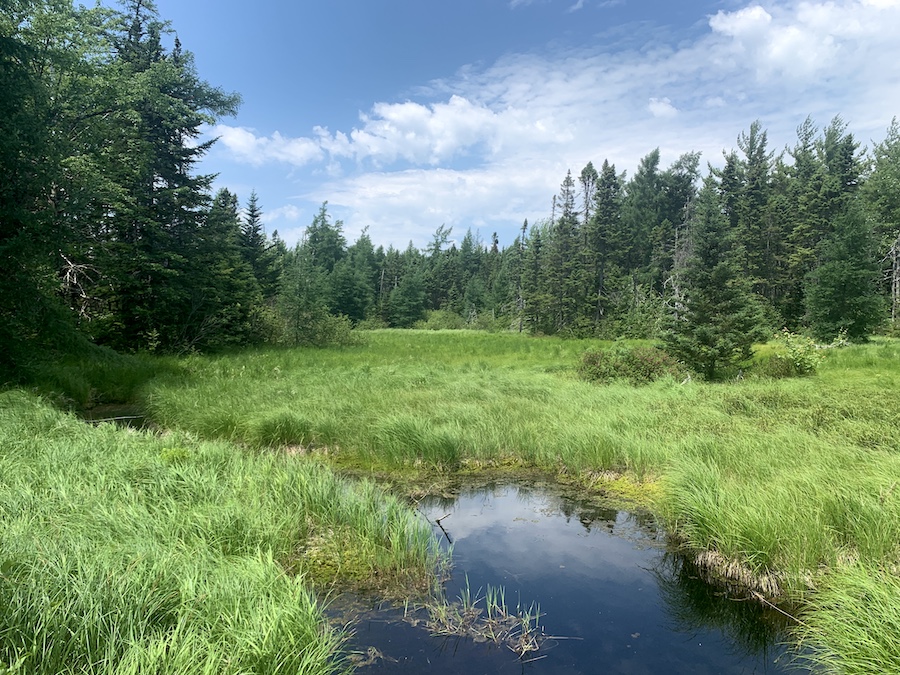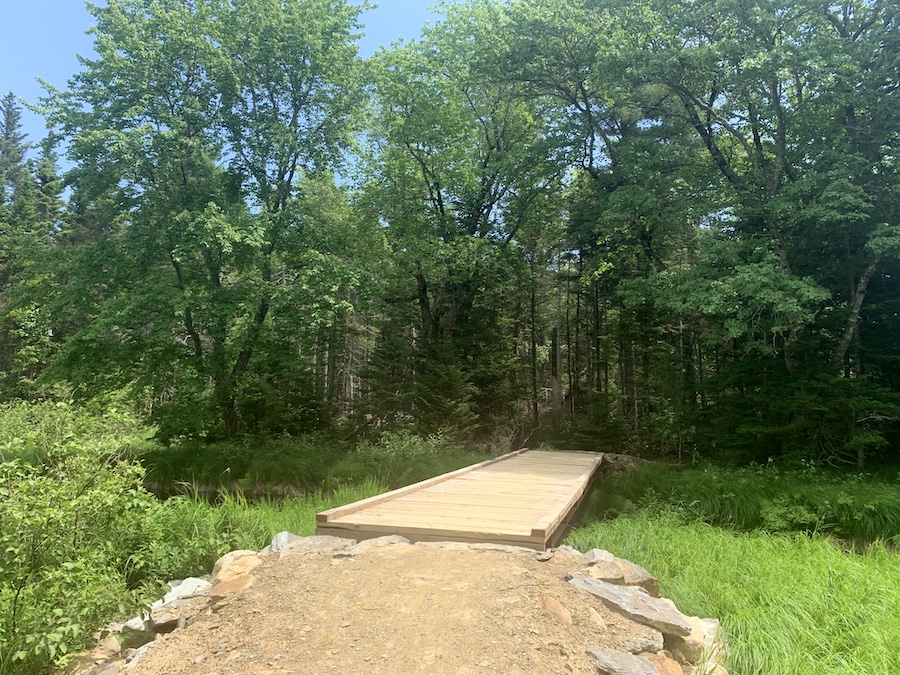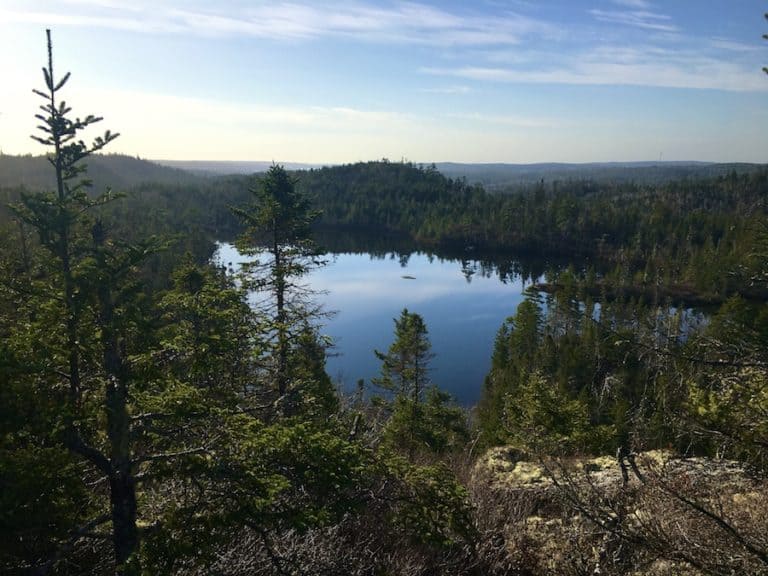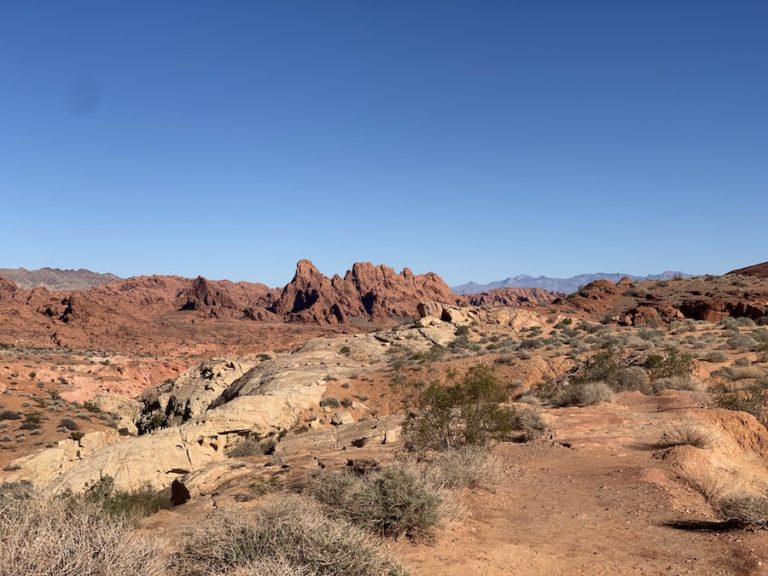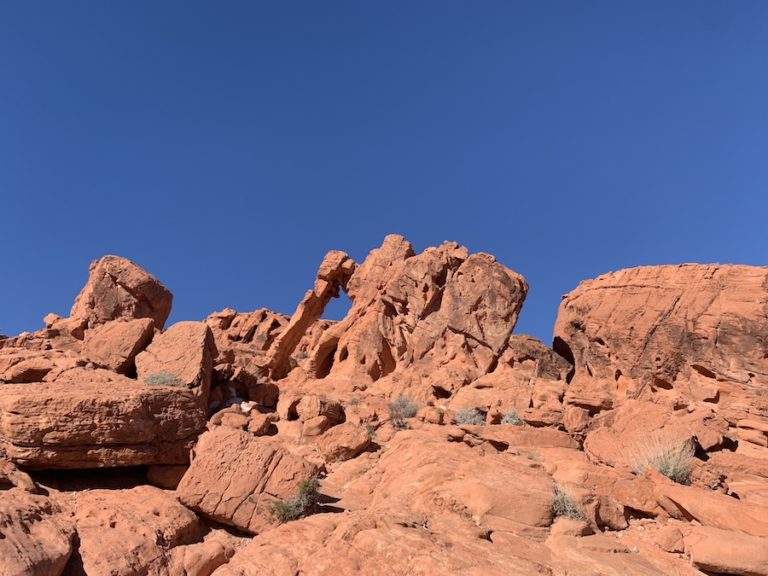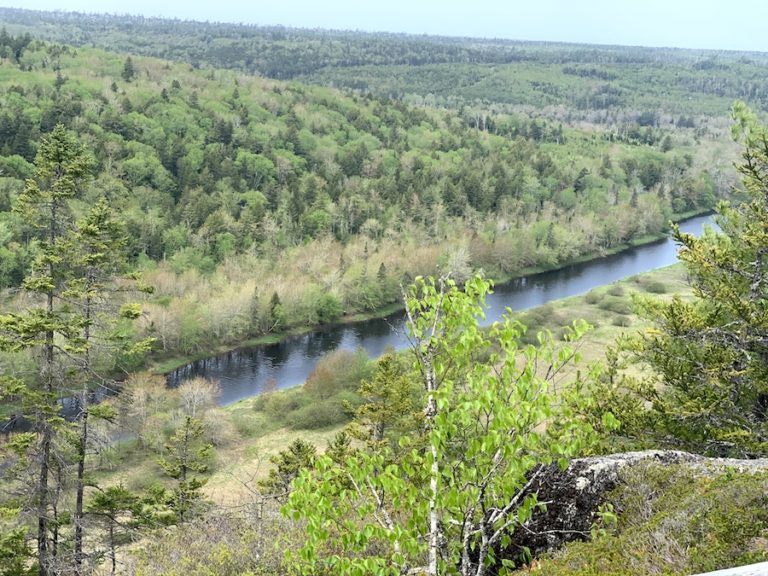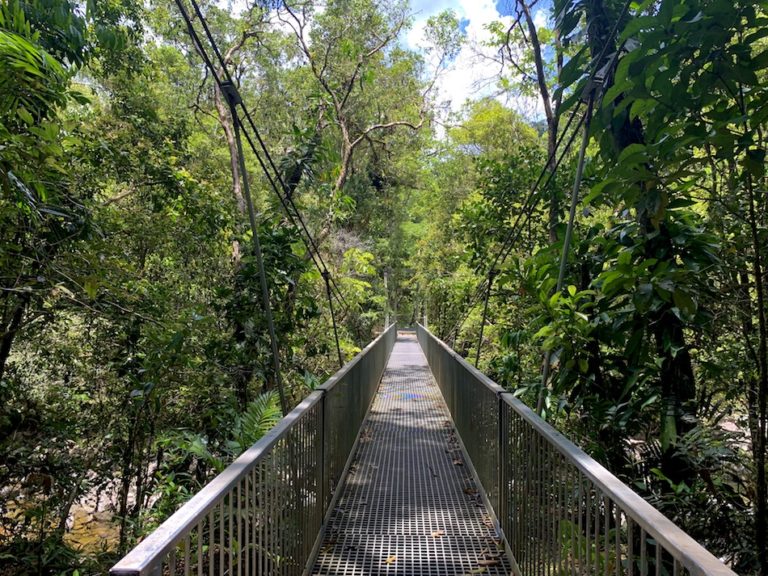Flowing Waters Trail In Kejimkujik National Park
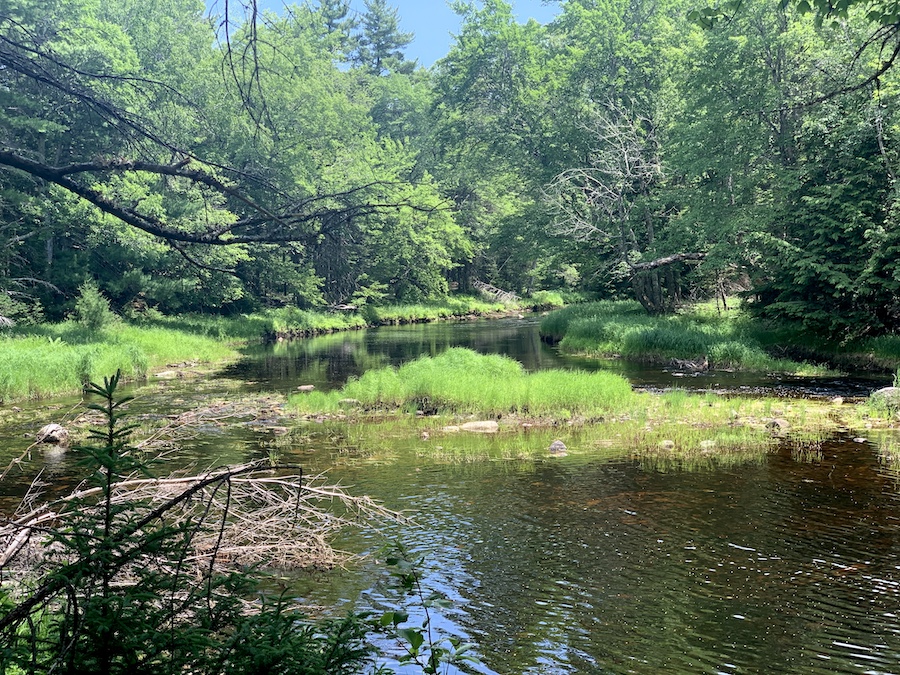
The Flowing Waters Trail is one of the numerous short hikes in the awesome Kejimkujik National Park in Nova Scotia, Canada. This 1-kilometre loop is accessible via the Big Dam Road or, alternatively, as a cut-off from the longer Ukme’k Trail.
The trail is well-groomed and easy to follow. There are bridges along the way to help hikers cross waterways near the Mersey River. Like many of Kejimkujik’s superb trails, the Flowing Waters Trail is easily accessible for a quick day trip or as part of a longer stay within the National Park.
Difficulty: Easy
Length: 1km (loop)
Suggested Duration: 25 – 35 minutes
Signage: Signs throughout, map at the trailhead
Facilities: Parking lot, camping
Disclaimer: This article includes affiliate links. If you click one of them, we may receive a small percentage of the sale at no extra cost to you. Thank you for your support!
Key Features Of Flowing Waters Trail
- Located in Kejimkujik National Park
- Dog friendly (on a leash)
- Connects to Ukme’k Trail
- Passes through a mix of forested areas and wetlands
- Offers opportunities for birdwatching and wildlife sightings
- Great for hiking and cycling
Facilities And Services
- Parking lot
- Picnic Table
- Camping
- Visitor Centre
- Garbage
- Washrooms (Visitor Centre, Jeremy’s Bay Campground, Jake’s Landing)
- Water Station (Visitor Centre, Jeremy’s Bay Campground, Jake’s Landing)
Before You Start Hiking Flowing Waters Trail
The Flowing Waters Trail is a short 1-kilometre loop trail that connects to the new Ukme’k Trail (6.5km one-way). This gives hikers the option to complete the full Flowing Waters Trail or continue onto the Ukme’k Trail. If you head north along Ukme’k, it will lead to the Beech Grove Trail, while south connects to the Mersey River Trail.
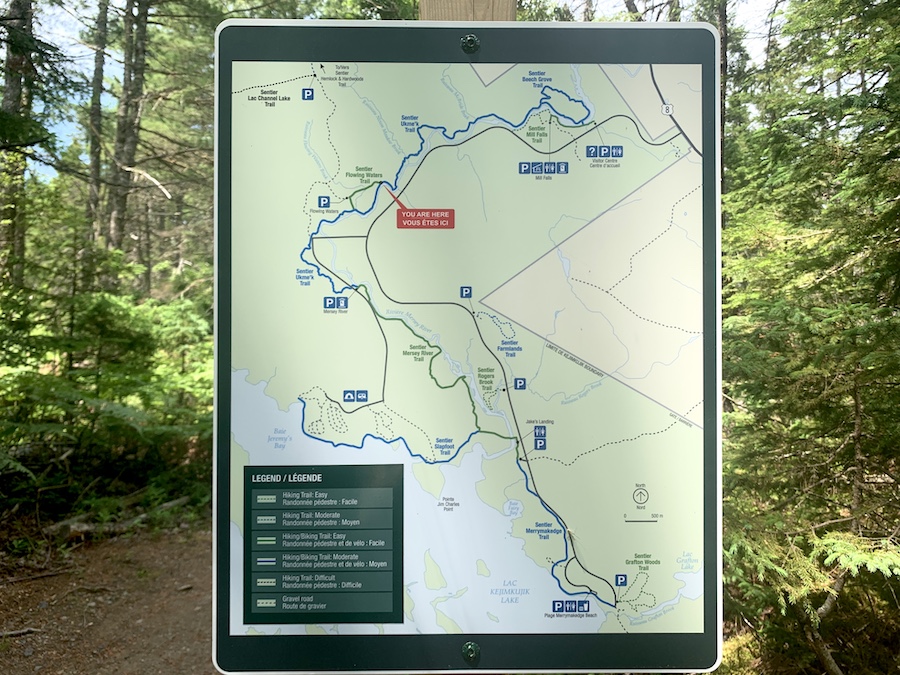
This trail takes hikers along the riverbank of the Mersey River and through wetlands. The terrain is groomed with either crushed gravel or grass, making it suitable for hikers and cyclists. Make sure to share the path and use a bell if you are cycling to notify hikers that you are approaching or passing.
Both hikers and cyclists must remain on the designated path and bridges at all times to avoid ticks and reduce the impact on fragile vegetation. Unfortunately, ticks are quite common within Kejimkujik National Park. Therefore, we suggest always carrying a tick removal tool with you.
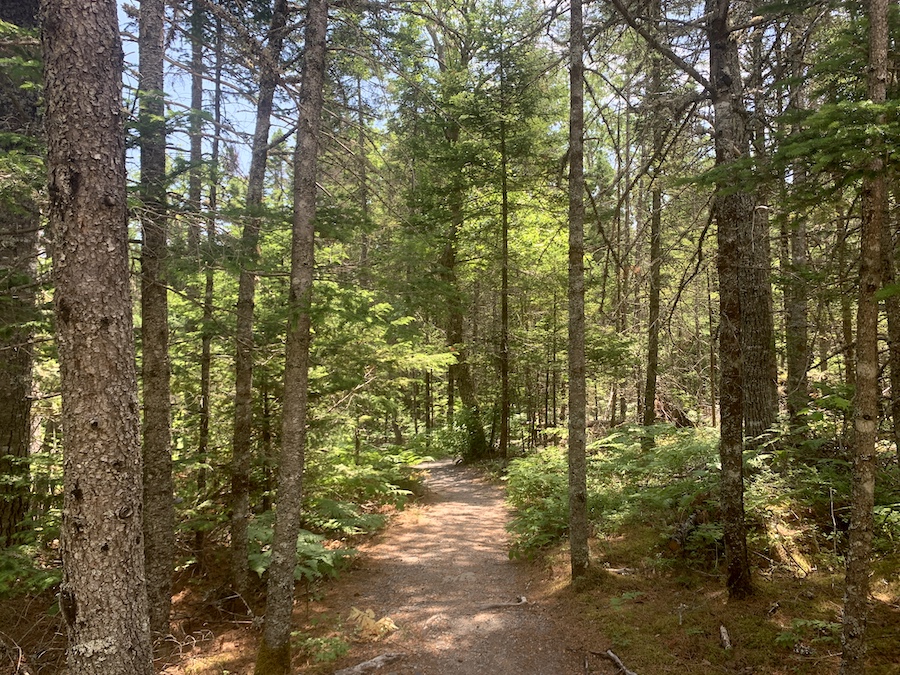
Since the Flowing Waters Trail is located within the Kejimkujik National Park and National Historic Site, a day or overnight park pass is required. The National Park is open year-round, although certain activities such as camping, fishing and Whynot Adventure rentals are only seasonal.
If you choose to stay overnight at Kejimkujik, there are a few accommodation options. Visitors can choose from the following: campsites, RV sites, roofed structures including oTENTik, Ôasis, rustic cabins and a yurt.
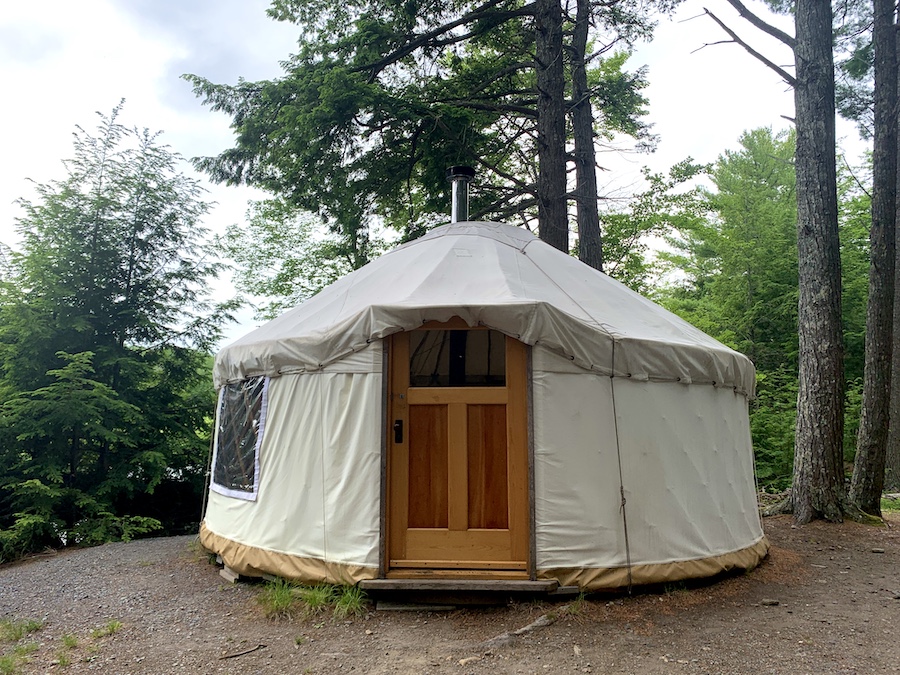
Last but not least, always remember to follow leave no trace principles whenever you are out enjoying the great outdoors. Do not litter, and if you come across any wildlife, please do not feed or leave food on the trails.
Our Experience Hiking Flowing Waters Trail
Our experience of the Flowing Waters Trail came during an extended stay in the Kejimkujik National Park. We completed this hike in the midst of a heatwave. Fortunately, the trail is short, and we would have air conditioning in the car directly before and after the hike.
We had just completed the Hemlocks And Hardwoods Trail before making our way to the Flowing Waters Trail parking lot and trailhead. We parked the car, drank some water, and got on our way along this 1-kilometre loop.
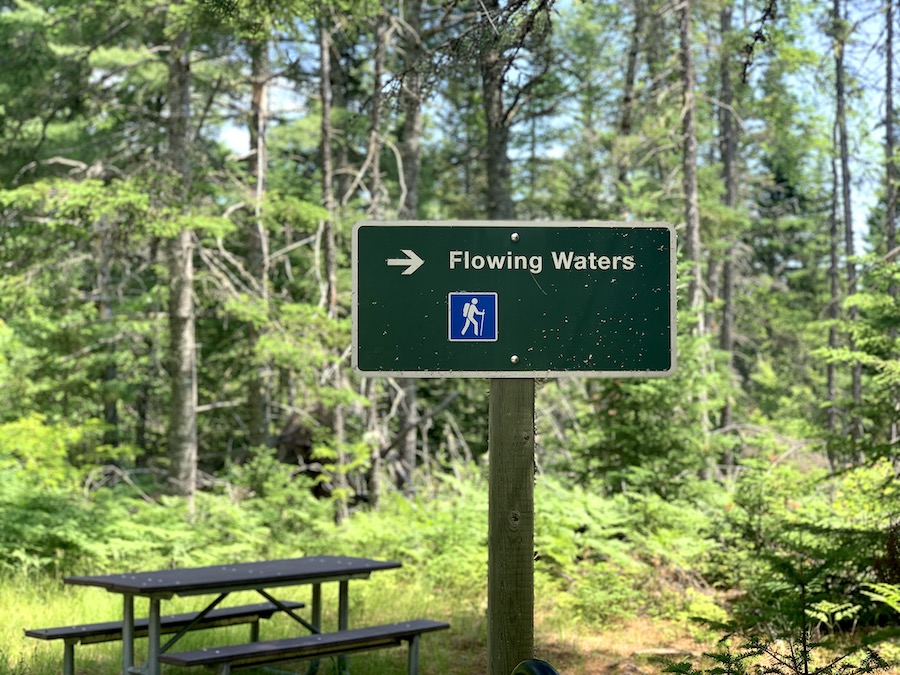
Like all the day hiking trails in Keji, the Flowing Waters Trail isn’t overly challenging. Along with the short distance, there is also little in terms of elevation gain or challenging terrain. One thing to note is that the grass is rather long in some stretches. Nova Scotia, unfortunately, has a growing tick population, so be watchful walking through this trail.
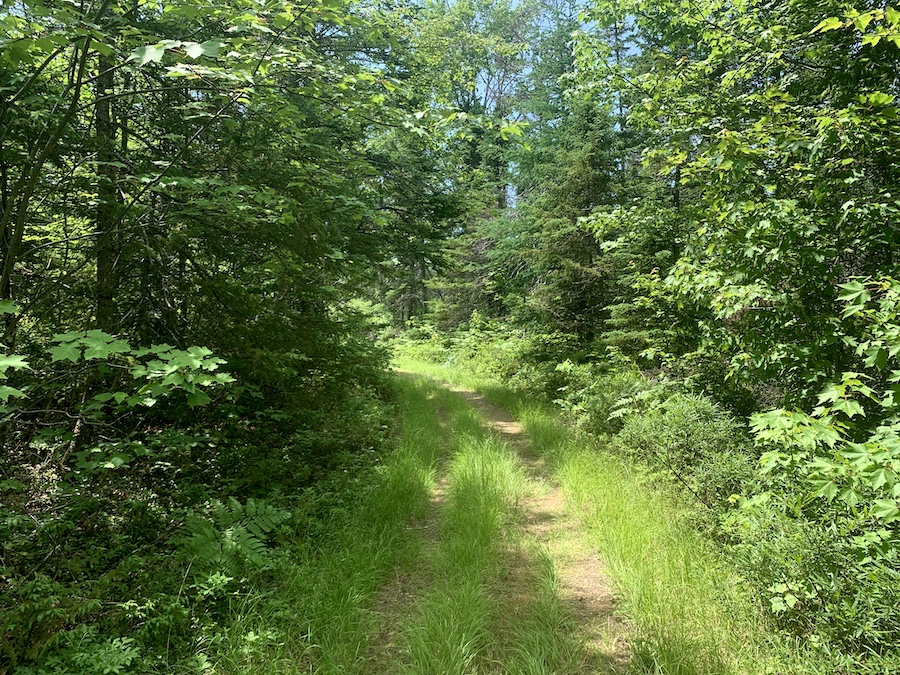
The trail quickly brought us to the Mersey River, which offered some coolness in the heat of the day. Knowing how many more hikes we had planned, however, we promptly got out of the sun and continued onward.
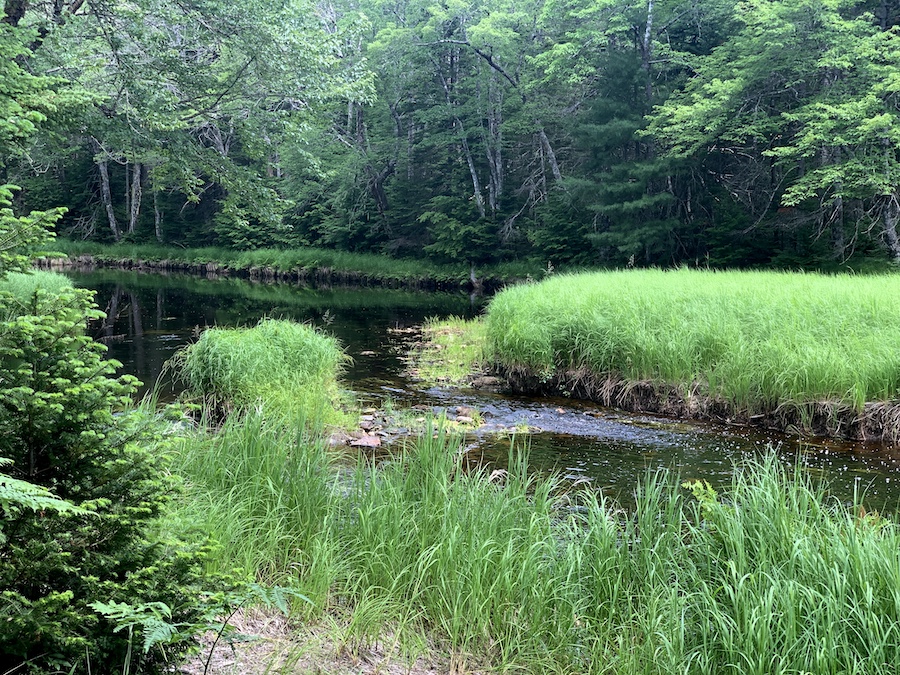
Hiking along the Flowing Waters Trail, we encountered two splits where the trail would change to the Ukme’k trail. We would come back to complete that trail in the future.
There wasn’t any significant shade throughout the Flowing Waters Trail, so we actually rushed it a little more than usual. Luckily for us, the comfortable terrain made this an easy task.
Of course, we didn’t leave without taking some pictures, which we’ve included below:
Once we got back to the car, we hydrated some more, turned the air conditioning on to 100%, and made our way to the third hike of the day: the Farmlands Trail.
Checklists And Recommended Gear
The following is our recommended gear while hiking and camping in Kejimkujik National Park.
HIKING GEAR
- Hiking shoes – Women’s // Men’s
- Cascade hiking poles
- Water bottle
- Atlantick tick removal tool kit
- Poncho or rain jacket
- Lamp/Headlight
- Sunscreen
- Sun hat
- Camera
- Insect repellent
SLEEP AND SHELTER
- Tent
- Tarp
- Sleeping bag
- Sleeping pad
- Pillow
- Rope
SAFETY GEAR
- Emergency first aid kit
- Whistle
- Watch
- Knife or multi-tool
- Bear spray in a holster
- Repair kit for the tent
- A trip plan left with a friend or family member in case of emergency
KITCHEN ESSENTIALS
- Single-burner camping stove
- Fuel for stove
- Pot
- Aeropress coffee press
- Food
- Cutlery
- Lighter, matches, fire starters
- Water filter or purification tablets
- Dry bag for hanging food at night
PERSONAL ITEMS
- Socks (extra in case of rain)
- Hiking clothes
- Warmer attire for the evenings
- Ecofriendly hygiene products
- Wilderness wipes
- Toothbrush and toothpaste
- Phone or emergency communication device
- Feminine hygiene items
- Quick-dry towel
- Hand sanitizer
- Ecofriendly body soap

